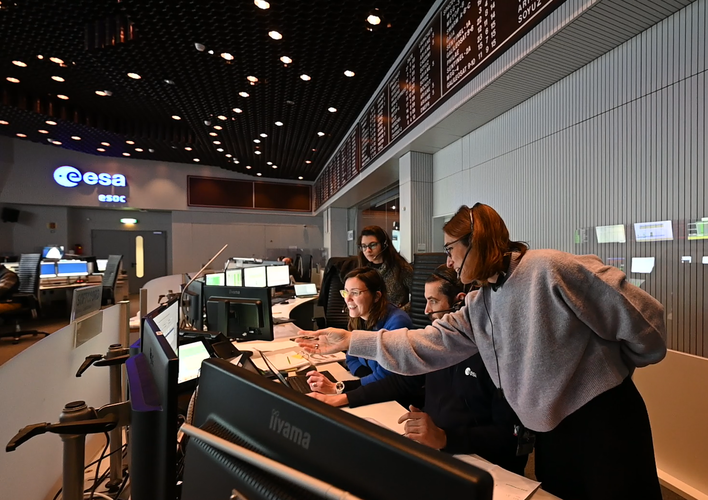
Copernical Team
BlackSky's completes commissioning within 18 hours of orbital delivered on news satellites
 BlackSky Technology Inc. (NYSE: BKSY) successfully commissioned two new satellites that began revenue-generating commercial operations within 18 hours of "The Beat Goes On" launch mission.
"BlackSky has more than doubled our on-orbit capacity in the last 18 months, with enough capacity to support growth over the next two years," said Nick Merski, BlackSky chief operating officer. "Our flex
BlackSky Technology Inc. (NYSE: BKSY) successfully commissioned two new satellites that began revenue-generating commercial operations within 18 hours of "The Beat Goes On" launch mission.
"BlackSky has more than doubled our on-orbit capacity in the last 18 months, with enough capacity to support growth over the next two years," said Nick Merski, BlackSky chief operating officer. "Our flex Leaky Russian space capsule lands safely in Kazakhstan
 Russia's uncrewed Soyuz spacecraft landed in Kazakhstan Tuesday morning after suffering a major coolant leak in December.
The Soyuz MS-22 spacecraft landed in Kazakhstan at 7:46 a.m. EDT on Tuesday after leaving the docking port of the Russian-built Rassvet module of the International Space Station.
"It's de-orbiting and descent to Earth went smoothly," Roscosmos officials announ
Russia's uncrewed Soyuz spacecraft landed in Kazakhstan Tuesday morning after suffering a major coolant leak in December.
The Soyuz MS-22 spacecraft landed in Kazakhstan at 7:46 a.m. EDT on Tuesday after leaving the docking port of the Russian-built Rassvet module of the International Space Station.
"It's de-orbiting and descent to Earth went smoothly," Roscosmos officials announ Flight simulations: putting Juice under pressure
 Video:
00:58:00
Video:
00:58:00
Sat in a windowless office beneath ESA’s Main Control Room in Darmstadt, Germany, two Simulations Officers have complete control over the Juice spacecraft and ESA’s deep space ground stations across the globe – and they take full advantage.
These aren’t the real 35-metre antennas or the actual spacecraft (currently in Kourou, French Guiana), but a complex simulator. For teams that will fly the mission for real, it all looks, feels and behaves just like the real thing. The ‘problem’ for them is, it keeps going wrong.
Down in the simulations bunker, the Officers are revelling in their dastardly plan
Brightest gamma-ray burst illuminates our galaxy as never before
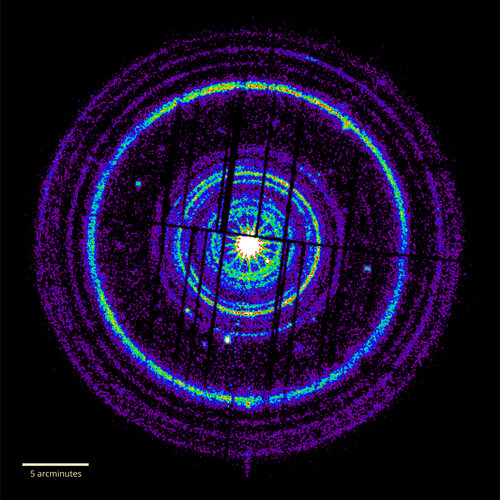
ESA space telescopes have observed the brightest gamma-ray burst ever seen. Data from this rare event could become instrumental in understanding the details of the colossal explosions that create gamma-ray bursts (GRBs).
Proba-3 complete: Formation-flying satellites fully integrated and ready for testing
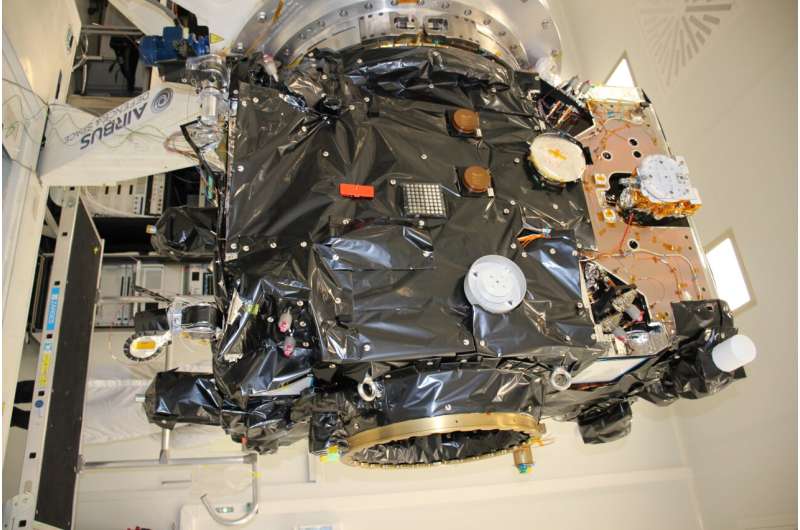
The two spacecraft forming ESA's Proba-3 mission for precise formation flying in orbit are now complete. All the instruments and sensors allowing them to maneuver to millimeter scale precision relative to one another have been integrated aboard, and the pair are fully wrapped in multi-layer insulation—ready to be tested in simulated space conditions.
Uncrewed Russian spacecraft that leaked coolant lands safely
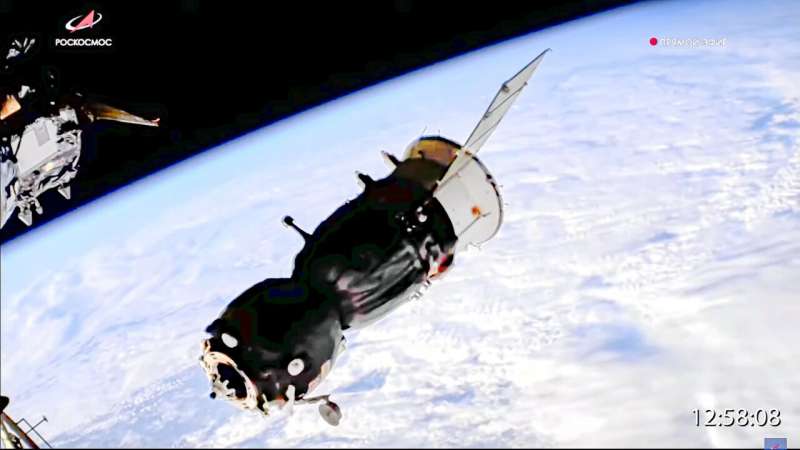
A Russian space capsule safely returned to Earth without a crew Tuesday, months after it suffered a coolant leak in orbit.
The Soyuz MS-22 leaked coolant in December while attached to the International Space Station. Russian space officials blamed the leak on a tiny meteoroid that punctured the craft's external radiator. They launched an empty replacement capsule last month to serve as a lifeboat for the crew.
The damaged capsule safely landed Tuesday under a striped parachute in the steppes of Kazakhstan, touching down as scheduled at 5:45 p.m.
ESA–EGU 2023 Excellence Award winners
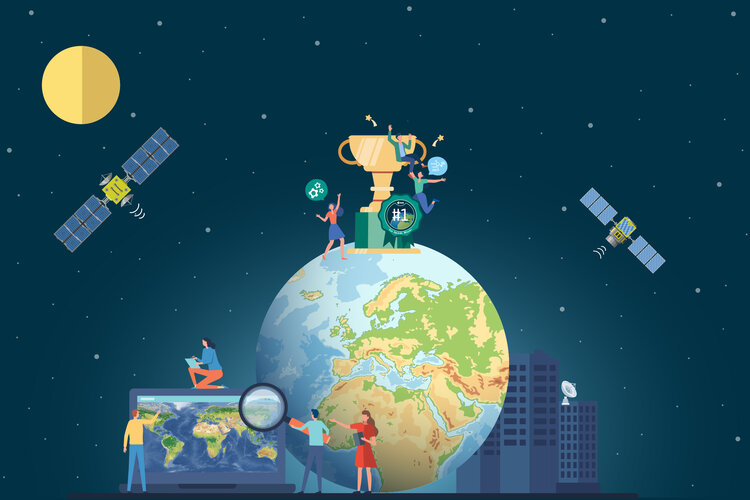
Honouring individual scientists and teams of scientists that have contributed to the innovative use of Earth observation data, ESA and the European Geosciences Union (EGU) are happy to announce the winners of this year’s prestigious Excellence Award.
The Making of Juice – Episode 10
 Video:
00:12:07
Video:
00:12:07
The Making of Juice series takes the viewer behind the scenes of the European space industry, space technology and planetary science communities around ESA’s Jupiter Icy Moons Explorer (Juice) mission.
Juice has a state-of-the-art science payload comprising remote sensing, geophysical and in situ instruments. This episode focuses on the in situ instruments, which will study the particle, magnetic, radio and plasma environment in the Jupiter system.
A magnetometer (J-MAG) equipped with sensors will characterise the Jovian magnetic field and its interaction with that of Ganymede, and will study the subsurface oceans of the icy moon. The Particle Environment Package
Quectel announces CC200A-LB satellite module for IoT
 Embedded World - Quectel Wireless Solutions, a global IoT solutions provider, has announced the launch of the CC200A-LB satellite module for IoT industries, which utilizes satellite IoT connectivity provided by ORBCOMM, a leading global provider of IoT communications and solutions. The module is designed to provide reliable global coverage and connectivity at a cost-effective price point and wit
Embedded World - Quectel Wireless Solutions, a global IoT solutions provider, has announced the launch of the CC200A-LB satellite module for IoT industries, which utilizes satellite IoT connectivity provided by ORBCOMM, a leading global provider of IoT communications and solutions. The module is designed to provide reliable global coverage and connectivity at a cost-effective price point and wit 
